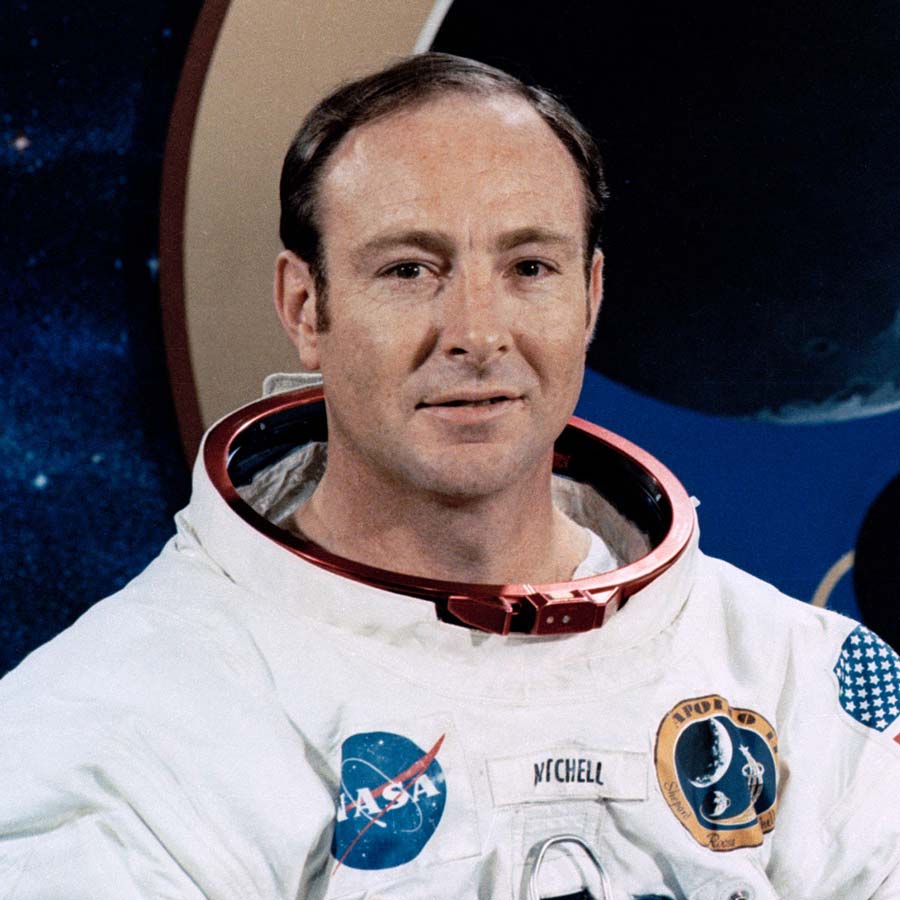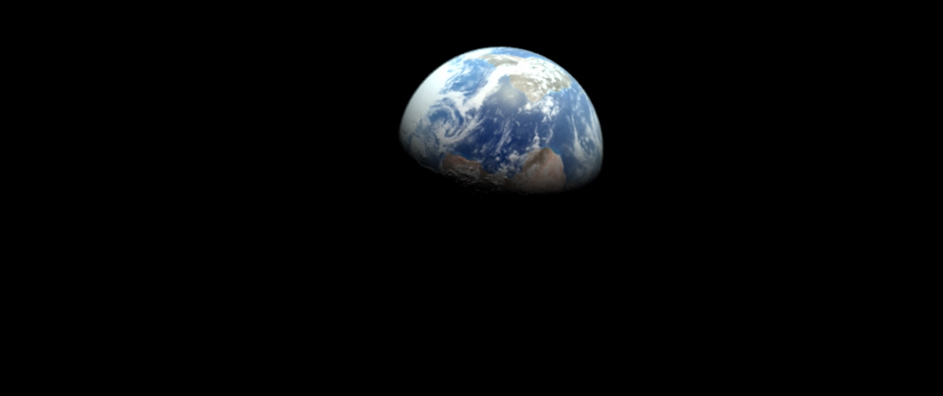The views expressed in our content reflect individual perspectives and do not represent the authoritative views of the Baha'i Faith.
Would you like to grow spiritually? Most people probably would, but few people actually dedicate themselves to walking a progressive spiritual path.
Obviously, if we want to grow spiritually, we’ll naturally try to widen our vision, look for higher truths and begin to abandon the consciousness of separateness from others. That means undergoing change, and trying to become a more enlightened and spiritual being.
When you walk a spiritual path, you attempt to free yourself from the bondage of your own selfish limitations. Sometimes that freedom from limitations comes about through a consistent practice of search, meditation, prayer and action—and sometimes it can come about in one powerfully swift moment of deep insight.

Edgar Mitchell
That deep insight came to Apollo 14 astronaut Edgar Mitchell during his return from the moon in 1971. He had a profound spiritual realization while looking out the window of his spacecraft, and it changed his entire life. Now known as “the overview effect,” multiple astronauts and cosmonauts have reported this kind of surprising, sudden shift of their spiritual awareness during their time orbiting Earth in space:
Something happens to you out there. You develop an instant global consciousness, a people orientation, an intense dissatisfaction with the state of the world, and a compulsion to do something about it.
Have you ever felt anything like what Edgar Mitchell felt—a pervasive sense of unity and harmony, a global consciousness? We often can feel it during meditation, in our dreams, emerging from our more spiritual moments, as we fall in love, or when we gain the insight to see the overwhelming beauty of creation. That sense of connectedness and oneness—called savikalpa samadhi by the Hindus, meaning a temporary dissolution of the individual consciousness into an encompassing awareness of the whole—can give us a glimpse of the truly unified reality of all living things:
The Overview Effect is a message from the universe to humanity. The message is that the Earth, when seen from orbit or the moon, is a whole system, where borders and boundaries disappear, and everything is interconnected. Our planet is a tiny spaceship in an enormous universe, which is itself a whole system, of which we are an important part. – Frank White, founder of the Overview Institute.
For centuries, the great Faiths and wisdom traditions have all told us that we are one—that our separate selves are only an illusion. All of our myths of self-enforced solitude in the wilds of nature or imprisonment in the belly of the whale—these stand for the isolation of the self. They symbolize our singleness, apartness, and separation. In order to continue our growth and move past the primary stages of search, our human condition requires that we transcend the first valley of spiritual search, going beyond self so we can turn our attention toward others, to the universe and to our Creator.
At this new stage of maturation and development, that inner self we have spent so much time and energy discovering can become a hindrance to further growth. When that occurs, our path changes. Seekers must grow past such a hindrance, because the path stops here unless the seeker can overcome the urge to stay fixated on the self.
So discovering the self demands an actively searching mind, heart, and spirit—but once read and understood, the book of self requires going past the limitations of the self:
The afflictions which come to humanity sometimes tend to center the consciousness upon the limitations. This is a veritable prison. Release comes by making of the will a door through which the confirmations of the spirit come. – Abdu’l-Baha, Divine Philosophy, p. 22.
… if you look with a subtle vision, shielding your gaze from seeing numbers and plurality and looking to the greater vision of oneness, you would leave the deadly desert of limitation and attain the shore of the ocean of unity. – from a provisional translation of Abdu’l-Baha’s I Was a Hidden Treasure.
When we live in self-centered and narcissistic societies, growing past the self can seem problematic and frightening. Many Westerners get stuck at this stage of maturation. Those who undergo psychiatric or psychological counseling, especially long courses of Freudian therapy, often spend a great deal of time and energy at this self-discovery stage, and as a result sometimes have difficulty moving past it. Of course, some people require long-term therapy, but treating psychology as our contemporary religion misses the point. To worship at the altar of never-ending self-discovery can ultimately fixate and delay our growth. Instead, the Baha’i teachings say, we must transcend the self to find unity.
In other words, the path to “Who am I?” ends in the realization that “I” limits us. Ken Wilber and many other transpersonal philosophers have written at length about this important realization:
So when you say ’my self’, you draw a boundary line between what is you and what is not you. When you answer the question, ’Who are you?’ you simply describe what’s on the inside of that line … All answers to that question, ’Who am I?’ stem precisely from this basic procedure of drawing a boundary line between self and not-self. The most interesting thing about this boundary line is that it can and frequently does shift. It can be re-drawn. In a sense, the person can re-map his soul and find in it territories he never thought possible, attainable, or even desirable. The most radical re-mapping or shifting of the boundary line occurs in the experiences of the supreme identity, for here the person expands his self-identity boundary to include the entire universe. We might even say that he loses the boundary line altogether, for when he is identified with the ’one harmonious whole’ there is no longer any outside or inside, and so nowhere to draw the line. – No Boundary, p. 5.
Transcending the self frightens some people, especially those who have spent a long time struggling for inner awareness in the valley of self. But transcending your self doesn’t mean losing yourself, or immersing your self in some huge impersonal ocean of no-identity.
Instead, transcending the self means moving to the next stage of your spiritual development and growth.
You May Also Like
Comments

















On the return trip home, gazing through 240,000 miles of space toward the stars and the planet from which I had come, I suddenly experienced the universe as intelligent, loving, harmonious.”
― Edgar D. Mitchell
Allah'u'abha